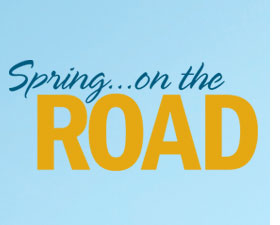Share the road safely
Streets provide means of transportation for motorists, bicyclists, and pedestrians. When so many different people come together on the roadways, particularly of varied shapes and sizes, there's the potential for safety problems if everyone isn't working together.Although most drivers must pass a test and driver education classes, including practice on roadways, the same testing measures are not in place for cyclists. Even though bicycles are not powered vehicles, they are governed by the same rules of the road as trucks, cars and motorcycles.
While there may be the potential for injury, the Centers for Disease Control and Prevention state that it is relatively low when safety procedures are met. At the forefront of bicycle safety is wearing a helmet. Males of the age 9 to 15 cycling in the summer without a helmet make up the highest number of bicycle incidents in the United States, according to the American Academy of Family Physicians.
Even with low incidences of bicycle-related injuries, it may still be prudent for avid cyclists to take a class or refresh their knowledge of bicycle rules of the road. In most areas of North America, bicycles and tricycles can be operated on all roads unless otherwise prohibited. Areas where bicycles are often prohibited include bridges and tunnels. A drivers' license is not needed to operate a bicycle, but rules may vary if the bicycle is powered or has been modified with a small engine. It is best to check with the Department of Motor Vehicles to determine the rules where you live.
Cyclists must ride on the same side of the road as vehicular traffic and in the same direction. Just like motorists, cyclists must obey all traffic control signs and signals. Both cyclists and motorists should yield the right-of-way to each other -- one does not have preference in right of way.
Many cyclists fail to signal their turns and ride in a predictable manner. This can be dangerous and lead to accidents. Hand signals can be used to indicate turning intentions if electronic signals are not installed. If riding at night or during dusk, a headlight and reflectors can help promote visibility, as can a rear, red flashing light.
Riding on roads is not as safe as riding on sidewalks, but most cities and towns prohibit the riding of bicycles on sidewalks, particularly in urban centers. When any riding is done, a helmet should be worn for personal safety -- it also may be the law.
Because bicycles may be harder to see and hear than cars and motorcycles, there are some other safety precautions cyclists can take to avoid accidents.
* Do not ride in the blind spots of other vehicles.
* Do not assume you can overtake or pass a vehicle that has the power to go much more quickly than you.
* Do not follow cars too closely to allow for adequate reaction time.
* Wear light colored or reflective clothing so that motorists can see you on the road.
* Use a bell or horn for further indication that you are in the area.
* Do not assume that because you are on a bicycle you can dart in and out of traffic.
* Be aware of parked cars on the side of the road. SmartMotorist.com says that approximately 5 percent of bicycle accidents occur when someone opens a parked car door in front of an oncoming bike.
Along the same vein, motorists can be more aware of cyclists on the road.
* Give cyclists a safe distance when passing.
* Slow down when passing a cyclist.
* Do not assume you have dominance over the cyclist.
* Do not try to goad the cyclist or scare him or her by veering in the direction. This cat-and-mouse game can be dangerous.
Cyclists and motorists can share the streets safely when they use some common sense and follow the same rules of the road.




